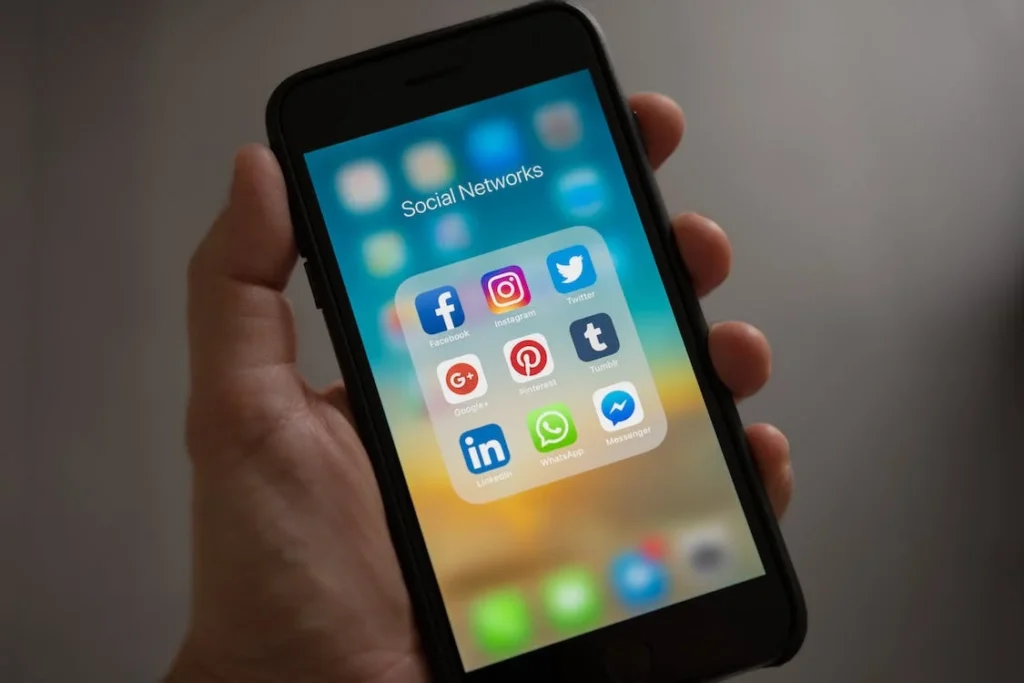This Article has been revised, edited and added to, by Poulomi Chakraborty.
- Why Social Media Matters in SEO
- Building High-Quality Content for Sharing
- Strategies for Social Media Sharing
- Engaging with Influencers and Communities
- Monitoring and Responding to Mentions
- Promotions & Contests
- Using Visual Content to Enhance Shareability
- User-Generated Content (UGC) and Backlinks
In the vast realm of digital marketing, the symbiotic relationship between social media and backlink building is undeniable. While some marketers have traditionally seen them as separate entities, the intertwined nature of these tools in the contemporary landscape makes it critical to harness them collectively. This guide delves deep into leveraging social media for effective backlink building.
To begin with, understanding the nexus between social media and SEO is crucial.
Why Social Media Matters in SEO

Understanding the Indirect Influences
While the direct impact of social signals on search engine rankings remains a topic of debate, the indirect benefits of a strong social media presence can significantly enhance your SEO efforts. These indirect benefits manifest in various forms, such as increased website traffic, enhanced brand recognition, and improved user engagement, all of which are pivotal factors that search engines consider when ranking websites.
Amplifying Brand Recognition Through Social Engagement
A meticulously curated social media presence not only elevates your brand’s visibility but also fosters familiarity among your target audience. This heightened brand recognition translates into increased organic search queries for your brand, signaling to search engines the credibility and authority of your website. Search engines, in their quest to deliver the most relevant and high-quality content to users, often give precedence to brands that exhibit strong domain authority and brand recognition.
Driving Organic Traffic with Quality Content Distribution
The strategic distribution of quality content across social platforms is a cornerstone of leveraging social media for SEO. By sharing insightful, engaging, and valuable content, you create multiple gateways for potential customers and followers to visit your website. This influx of traffic from social media not only boosts your site’s visibility but also increases the dwell time and decreases the bounce rate, factors that are critical to improving your SEO rankings.
Nurturing User Engagement for Enhanced SEO Outcomes
Engagement on social media, including comments, shares, and likes, serves as a testament to the quality and relevance of your content. Engaging with your audience on social media not only humanizes your brand but also encourages users to spend more time interacting with your content. This prolonged engagement sends positive signals to search engines about the value and relevance of your website, indirectly influencing your SEO performance.
Capitalizing on the Viral Potential of Social Content
The viral nature of social media presents an unparalleled opportunity for exponential visibility. Content that resonates with your audience, strikes an emotional chord, or provides exceptional value has the potential to be shared widely across social platforms. This not only amplifies your reach but also increases the likelihood of earning backlinks from various online sources, further bolstering your SEO efforts.
Crafting a Social Media SEO Strategy
To maximize the SEO benefits of your social media activities, consider the following strategic approaches:
- Develop a Content Calendar: Plan your content in advance to maintain a steady stream of high-quality posts. This consistency helps in building a loyal audience base that is more likely to engage with and share your content, indirectly supporting your SEO goals.
- Optimize Social Profiles for SEO: Your social media profiles should include keywords relevant to your business, a detailed description of your services, and a link to your website. These elements are crucial for increasing the visibility of your profiles in search engine results.
- Encourage Social Sharing: Include social sharing buttons on your website and blog posts to make it easy for visitors to share your content. The more your content is shared, the wider the audience it reaches, increasing your website’s exposure and potential for backlinks.
By extending the scope of your SEO strategy to include a robust social media plan, you harness the full potential of digital marketing. This holistic approach ensures that every facet of your online presence works in tandem to achieve superior SEO outcomes, driving more traffic to your website and ultimately, fostering the growth of your startup.
Building High-Quality Content for Sharing

Before leveraging social media, the foundation needs to be robust – and that foundation is high-quality content.
The Foundation of Share-Worthy Content
At the heart of any successful social media and backlink-building strategy lies the undeniable power of high-quality content. Crafting content that resonates with your audience, addresses their needs, and stands out in the crowded digital space is fundamental. This content becomes the beacon that attracts visitors to your website, encouraging shares and naturally fostering backlinks. But what transforms good content into great, share-worthy material?
Understanding Audience Needs and Preferences
To create content that truly engages and compels your audience to share, you must first deeply understand who your audience is. This involves more than just demographics; it requires insight into their challenges, interests, and online behaviors. Utilizing tools like Google Analytics and social media insights can provide a wealth of information about your audience’s preferences, enabling you to tailor your content strategy to meet their needs.
Storytelling That Connects and Engages
Narratives and stories have the power to connect on a deeper emotional level than traditional marketing content. By weaving your insights, data, and even case studies into compelling narratives, you create an emotional resonance with your audience. Stories that reflect common experiences, challenges overcome, and journeys to success not only engage readers but also become memorable. This emotional connection increases the likelihood of your content being shared across social platforms, extending its reach and impact.
Leveraging Data and Research to Establish Authority
Incorporating data, research findings, and industry insights into your content not only enriches it but also positions your brand as an authoritative voice in your field. Original research, surveys, and in-depth analyses offer immense value to your audience and set your content apart from the plethora of generic articles online. When your content becomes a referenced source for data or insights, it naturally attracts backlinks, enhancing your SEO efforts.
Interactive and Visual Content for Enhanced Engagement
In the digital age, attention spans are short, and the competition for eyes on screen is fierce. Interactive content such as quizzes, polls, infographics, and videos can significantly increase engagement rates. Visual content, in particular, is more likely to be shared on social media, making it a critical component of your content strategy.
Tools like Canva and Adobe Spark enable even those with minimal design skills to create eye-catching visuals, while platforms like SurveyMonkey can facilitate the creation of interactive elements that engage your audience.
Optimizing Content for Shareability
Once you have crafted high-quality, engaging content, the next step is to ensure it is optimized for sharing:
- Craft Captivating Headlines: Your content’s headline is the first, and often only, impression you make on potential readers. A compelling headline can significantly increase the likelihood of clicks and shares.
- Incorporate Share Buttons: Make it easy for readers to share your content by incorporating social share buttons on your website and blog posts.
- Use SEO Best Practices: While crafting content for humans, don’t forget the search engines. Use relevant keywords, meta descriptions, and tags to ensure your content is discoverable.
Creating content that is tailored to the interests and needs of your audience, tells a compelling story, incorporates authoritative data, and is presented in an engaging format, is central to leveraging social media for backlink building. This approach not only enhances your brand’s visibility but also establishes a foundation for sustainable growth in the digital marketplace. Through strategic planning and creative execution, your content becomes a catalyst for engagement, shareability, and ultimately, the successful building of backlinks.
Strategies for Social Media Sharing

Once your content is ready, the next step is effective dissemination on social platforms.
Crafting a Share-Worthy Social Media Strategy
The essence of a powerful social media strategy lies in understanding the intricate dance between content creation and the nuances of each social platform. It’s not just about broadcasting your message into the digital void but engaging in a strategic manner that amplifies your content’s reach and fosters the creation of backlinks. This requires a nuanced approach, where knowledge of platform dynamics and audience preferences guides your sharing tactics.
Tailoring Content for Platform-Specific Audiences
The first step in a nuanced social media sharing strategy is recognizing that each platform hosts a unique audience with distinct preferences. Content that resonates on LinkedIn might not perform as well on Instagram, and vice versa. Start by identifying where your target audience spends most of their time and what type of content they engage with on these platforms. This insight will allow you to customize your content to fit the medium, increasing its shareability and the potential for backlink generation.
LinkedIn: A Hub for Professional Engagement
On LinkedIn, in-depth articles, industry analyses, and professional achievements reign supreme. Sharing detailed blog posts or white papers that offer value to professionals within your industry can spark engagement and drive traffic to your website. Consider leveraging LinkedIn’s native article feature to share insights, followed by a call-to-action leading back to your site.
Twitter: The Realm of Timely Conversations
Twitter thrives on immediacy and brevity. It’s the perfect platform for sharing updates, engaging in industry conversations, and connecting with influencers. Use hashtags strategically to increase the visibility of your tweets and incorporate visuals to boost engagement. Regularly engaging with your followers and participating in trending conversations can increase the likelihood of your content being shared beyond your immediate network.
Instagram and Pinterest: Visual Storytelling Platforms
For brands with visually appealing content, Instagram and Pinterest offer a canvas to captivate an audience. High-quality images, infographics, and short videos can tell your brand’s story in an engaging way. On Instagram, make use of Stories and Reels to share behind-the-scenes content, user-generated content, or quick tips. Pinterest is ideal for sharing infographics and step-by-step guides that link back to your website.
Optimizing Posting Times for Maximum Engagement
Timing is crucial in social media sharing. Identifying when your audience is most active on each platform can significantly increase the visibility of your posts. While tools like Sprout Social or Buffer offer insights into optimal posting times, it’s important to also monitor your engagement metrics and adjust your posting schedule accordingly. Consistency, coupled with strategic timing, ensures that your content reaches its audience when they are most receptive.
Engaging and Collaborating with Influencers
Influencers wield considerable power in shaping opinions and spreading content. Collaborating with influencers who align with your brand values and have an engaged audience can dramatically increase your content’s reach. Whether through guest blogging, co-hosting webinars, or simply engaging with their content, building relationships with influencers can lead to more shares and backlinks from diverse sources.
Fostering Community and Encouraging Interaction
Beyond simply sharing content, fostering a sense of community on your social platforms can enhance engagement. Prompt your audience to share their thoughts, ask questions, and encourage them to share their experiences related to your content. This not only increases the visibility of your posts but also builds a loyal audience that is more likely to share your content within their networks.
A strategic approach to social media sharing involves understanding the unique landscape of each platform, tailoring content to match audience preferences, optimizing for engagement through strategic timing, and fostering relationships with influencers and your community. By weaving these elements together, startups can amplify their content’s reach, drive meaningful traffic to their website, and enhance their backlink building efforts.
Engaging with Influencers and Communities
Leveraging the power of influencers and active communities can amplify your backlink efforts multi-fold.
The Art of Influencer Collaboration
In the realm of digital marketing, engaging with influencers is not merely a tactic but a strategic endeavor that can elevate your brand’s visibility and foster authentic connections. Influencers, with their established audiences and trusted voices, can amplify your message and enhance your content’s reach. The key to successful influencer collaboration lies in identifying individuals whose values align with your brand and whose audience mirrors your target demographic.
Identifying the Right Influencers
Begin by researching influencers within your niche who engage with their followers in meaningful ways. Tools like BuzzSumo or Followerwonk can help identify influencers by topic or keyword, enabling you to pinpoint those whose content resonates with your target audience. Once identified, assess their engagement rates, content quality, and audience demographics to ensure a good fit with your brand.
Building Authentic Relationships
Effective influencer collaborations are rooted in genuine relationships. Rather than approaching influencers with immediate requests for collaboration, start by engaging with their content. Leave thoughtful comments, share their posts, and participate in discussions. This approach not only puts your brand on their radar but also establishes a foundation of mutual respect and interest.
Leveraging Communities for Growth
Beyond influencers, online communities present fertile ground for sharing content, gaining insights, and building relationships. Platforms like Reddit, Quora, LinkedIn groups, and niche forums offer opportunities to engage with highly targeted audiences interested in your industry.
Participating with Value
The golden rule of community engagement is to provide value. Before sharing your content, spend time understanding the community’s norms and what types of content are well-received. Contribute to discussions, offer advice, and answer questions without expecting anything in return. Over time, as you build credibility, the community will be more receptive to your content shares.
Hosting AMAs and Q&A Sessions
Hosting Ask Me Anything (AMA) sessions or Q&A threads in relevant communities can significantly boost engagement and establish your brand as a thought leader. These sessions provide a direct line of communication between your brand and potential customers, allowing you to showcase your expertise and deepen relationships with your audience.
Nurturing Brand Advocates
Within your audience and customer base lie potential brand advocates—individuals who are enthusiastic about your brand and willing to share their positive experiences. Encouraging and nurturing these advocates can lead to organic shares and backlinks.
Recognizing and Rewarding Engagement
Monitor social mentions and interactions to identify potential brand advocates. Show appreciation for their support by highlighting their content, offering exclusive insights, or providing them with rewards. Recognition not only incentivizes further engagement but also fosters a loyal community around your brand.
Creating Shareable Experiences
Design experiences that your audience and customers will want to share. Whether it’s an interactive online event, a groundbreaking piece of content, or an innovative product launch, creating memorable experiences can spur organic sharing and backlinking.
Influencer collaborations and community engagement are pivotal elements of a holistic digital marketing strategy. By identifying the right influencers, building authentic relationships, actively participating in communities, and nurturing brand advocates, startups can significantly enhance their online visibility. These efforts, grounded in strategic planning and genuine engagement, pave the way for meaningful connections, increased shareability of content, and the cultivation of a robust backlink profile.

Related: Check out our free SEO suite

Monitoring and Responding to Mentions
In the dynamic landscape of digital marketing, the ability to monitor and respond to brand mentions across the web is not just beneficial—it’s essential. This practice, often referred to as social listening, enables brands to harness insights from direct feedback, engage in conversations about their industry, and protect their brand reputation. For startups, where every interaction can significantly impact brand perception, mastering social listening and engagement can provide a competitive edge.
Establishing a Comprehensive Monitoring Framework
To effectively monitor brand mentions, startups need to implement a system that covers not just social media platforms but also blogs, forums, and news sites. This requires the use of sophisticated tools that can scan the digital landscape for mentions of your brand, products, or even key personnel.
Selecting the Right Tools for Your Brand
Begin by evaluating tools like Google Alerts for a basic level of monitoring. For more advanced needs, platforms like Mention or Brand24 offer real-time tracking across various digital channels. These tools can provide analytics on sentiment analysis, mention volume, and even identify influencers talking about your brand.
Setting Up Alerts and Keywords
Craft a list of keywords that includes your brand name, product names, key personnel, and potentially even your competitors. This comprehensive approach ensures you’re not just aware of direct mentions but also conversations relevant to your brand and industry. Customizing alerts to prioritize mentions based on reach, sentiment, or other criteria can help you focus on the most impactful conversations.
Engaging With Mentions Strategically
The true power of monitoring lies in your response strategy. Engaging with both positive and negative mentions in a timely and thoughtful manner can significantly impact your brand’s online presence and reputation.
Responding to Positive Mentions
For positive mentions, a simple thank you can go a long way in fostering goodwill. However, consider going beyond the basics by sharing the mention on your own channels, offering additional value in your response, or even featuring the mention in your content. This not only rewards the original poster but also encourages others to share positive experiences.
Addressing Negative Mentions with Care
Negative mentions require a careful, strategic approach. Always respond promptly and professionally, offering to take the conversation offline if necessary. This demonstrates your commitment to customer service and can often turn critics into advocates. Monitoring negative mentions also provides valuable feedback that can be used to improve your products or services.
Analyzing Mentions for Strategic Insights
Beyond engagement, the data gathered from social listening can offer strategic insights into your brand’s performance, audience sentiment, and market trends. Analyzing mention volume over time can indicate the effectiveness of your marketing campaigns, while sentiment analysis can reveal shifts in public perception.
Leveraging Insights for Content Strategy
The conversations and questions surrounding your brand can inform your content strategy, guiding you towards topics that resonate with your audience. This not only enhances your SEO efforts but also ensures your content marketing is deeply aligned with your audience’s interests and needs.
The process of monitoring and responding to mentions is a crucial component of a comprehensive digital marketing strategy. By establishing a robust monitoring framework, engaging strategically with mentions, and analyzing insights for continuous improvement, startups can effectively manage their online reputation, foster community engagement, and glean valuable insights to drive their marketing strategy forward. This proactive approach to social listening and engagement not only protects the brand but also identifies opportunities for growth and connection in the digital ecosystem.
Promotions & Contests

In the rapidly evolving digital marketing landscape, promotions and contests have emerged as powerful tools for engaging audiences, boosting brand visibility, and driving traffic. For startups looking to carve out a niche in a crowded market, leveraging these tactics can be particularly effective. However, the key to success lies not just in launching a promotion but in strategically designing and executing campaigns that resonate with your target audience and align with your brand’s goals.
Crafting Compelling Digital Promotions
The foundation of a successful promotion is its appeal to your target audience. This necessitates a deep understanding of their preferences, pain points, and what they value most. Whether it’s exclusive access, discounts, or the chance to win something, your promotion should offer tangible value that excites and motivates participation.
Personalization at the Core
Incorporating elements of personalization can significantly enhance the effectiveness of your promotion. Tailoring your campaign to reflect the interests and behaviors of your audience segments makes your offer more relevant and appealing. This could mean creating different versions of your promotion for different social media platforms, based on the unique characteristics and preferences of your audience on each platform.
Designing Contests for Maximum Engagement
Contests represent a special category of promotion that can generate substantial engagement and virality. The allure of competition and the possibility of winning something can encourage participants to share your contest with their networks, thereby amplifying your reach.
Emphasizing Creativity and Participation
Encourage creativity and participation by designing contests that require entrants to submit user-generated content. This could be anything from a photo or video to a testimonial or story, related to how they use your product or service. Such content not only engages your audience but also provides you with valuable assets that can be used in future marketing efforts.
Streamlining Participation Processes
To maximize participation, the entry process for your contest should be as straightforward as possible. Complex rules or cumbersome submission processes can deter potential entrants. At the same time, ensure that the mechanism for entry naturally encourages sharing and backlinking to your site. For example, entries could involve posting on social media with a specific hashtag, tagging friends, or linking back to a landing page on your website.
Leveraging Social Media Platforms for Wider Reach
Each social media platform offers unique features and audience demographics, making it critical to choose the right platforms for your promotion or contest.
Platform-Specific Strategies
- Instagram: Ideal for photo contests or campaigns that utilize visually appealing content. Utilize Stories and posts for contest announcements and updates.
- Facebook: Great for wider audience reach and engagement. Facebook’s sharing and commenting features can help increase visibility and participation.
- Twitter: Perfect for short-lived contests that capitalize on timely events or trends. The retweet function can help spread the word rapidly.
- LinkedIn: While not traditionally used for contests, LinkedIn can be effective for B2B promotions, especially those that emphasize professional achievements or industry-related challenges.
Monitoring and Measuring Success
To gauge the effectiveness of your promotions and contests, set clear, measurable goals at the outset. These might include increases in website traffic, social media engagement metrics, or the number of backlinks generated. Utilizing analytics tools to track these metrics will enable you to assess the success of your campaign and identify areas for improvement in future promotions.
Promotions and contests, when strategically designed and executed, can significantly enhance a startup’s digital marketing efforts. By understanding and leveraging the preferences of your target audience, simplifying participation processes, and choosing the right platforms, you can engage your audience, increase visibility, and foster a stronger, more connected community around your brand. This not only drives immediate engagement but also lays the foundation for sustained growth and success in the digital realm.
Using Visual Content to Enhance Shareability

In today’s digital era, where the average user is bombarded with an overwhelming amount of information, visual content emerges as a beacon of engagement in the cluttered social media landscape. For startups, leveraging visual content not only enhances shareability but also significantly contributes to building a strong brand presence and fostering backlinks. The strategic integration of visual content into your digital marketing efforts can transform the way your brand communicates, resonates, and engages with its audience.
Crafting a Visual Identity That Resonates
Developing a consistent and recognizable visual identity across your digital platforms is crucial. This visual branding extends beyond your logo to include the colors, fonts, and imagery styles that represent your brand. Consistency in visual branding helps your audience instantly recognize your content, fostering trust and increasing the likelihood of shares and engagement.
Strategic Imagery Selection
Choosing the right images to accompany your content is not a task to be taken lightly. Images should not only be high-quality and relevant but also evoke the emotions or actions you want from your audience. Whether it’s the inspiration, excitement, curiosity, or trust, the imagery you select can significantly impact how your content is perceived and interacted with.
Elevating Content with Infographics and Data Visualization
Infographics and data visualizations turn complex information into digestible, engaging pieces of content that are highly shareable. These tools are particularly effective for startups looking to establish thought leadership and convey their expertise in a visually appealing way.
The Art of Data Storytelling
The most engaging infographics are those that tell a story. By presenting data and insights through a narrative framework, you make your content relatable and memorable. Consider the flow of information, and use design elements to guide the viewer through the story you’re telling.
Utilizing Tools for Impactful Infographics
Several online tools, such as Piktochart, Venngage, and Canva, offer templates and design elements that make creating professional-looking infographics accessible to those without a graphic design background. Leveraging these tools can help you produce quality visual content that stands out and encourages sharing.
Leveraging Video for Maximum Engagement
Video content continues to dominate social media, offering an immersive experience that can convey your message more effectively than text or static images alone. From explainer videos and product demonstrations to customer testimonials and behind-the-scenes looks, video content can significantly increase engagement and shareability.
Tips for Creating Engaging Videos
Keep videos short and to the point to hold the viewer’s attention. Use captions for viewers who watch without sound, and ensure your videos are optimized for mobile viewing. Additionally, including a clear call-to-action can direct viewers to your website, increasing traffic and potential backlinks.
Incorporating User-Generated Content for Authentic Engagement
User-generated content (UGC) not only provides you with authentic material to share but also encourages more interaction from your audience. Featuring customer photos, videos, reviews, or testimonials not only adds credibility to your brand but also fosters a sense of community and belonging among your audience.
Encouraging UGC through Contests and Social Features
Host contests that encourage users to create content with your products, or use hashtags to collect and share user experiences. Platforms like Instagram Stories offer the perfect medium for sharing UGC, allowing you to highlight customer stories in a dynamic and engaging way.
In weaving visual content into the fabric of your digital marketing strategy, you unlock a realm of possibilities for engaging your audience, enhancing shareability, and securing backlinks. By developing a strong visual identity, leveraging the power of infographics and videos, and embracing user-generated content, startups can craft compelling narratives that resonate deeply with their audience, driving both engagement and SEO success in the process.
User-Generated Content (UGC) and Backlinks
In the digital marketing ecosystem, user-generated content (UGC) stands as a testament to a brand’s relationship with its audience. UGC not only provides authentic material for marketing campaigns but also significantly impacts SEO and backlink strategies. For startups, harnessing the power of UGC can lead to increased brand visibility, stronger community ties, and improved search engine rankings. The journey to effectively integrating UGC into your strategy involves several key steps, each designed to maximize engagement and encourage the natural generation of backlinks.
Cultivating a Community Eager to Share
Building a loyal community that actively engages with your brand and contributes content is foundational. This community becomes the lifeblood of your UGC strategy, offering a continuous stream of content that reflects genuine experiences with your brand.
Creating Engaging Brand Experiences
The initial step is to design experiences that are worth sharing. Whether through your product, customer service, or online interactions, each touchpoint should aim to exceed expectations. Happy customers are more likely to share their experiences on social media, blogs, and forums, thereby generating organic backlinks.
Encouraging Engagement Through Social Proof
Leverage social proof by showcasing UGC across your digital platforms. Featuring user reviews, testimonials, photos, and videos on your website not only enhances credibility but also encourages others to share their own experiences. This social proof acts as a powerful tool for persuading potential customers and generating additional UGC.
Strategically Soliciting UGC
While organic shares are valuable, actively soliciting UGC can amplify your efforts. This involves creating opportunities for your audience to contribute content, thereby fostering a sense of community and belonging.
Leveraging Hashtags for Broader Reach
Create and promote brand-specific hashtags that customers can use when posting about your products or services. These hashtags not only organize UGC but also extend the reach of your brand on social platforms. Regularly monitor these hashtags to engage with users and share their content, further encouraging participation.
Hosting Contests and Challenges
Contests and challenges are effective methods for generating UGC. By incentivizing participation with prizes or recognition, you can motivate your audience to create and share content related to your brand. Ensure the contest rules encourage the creation of backlinks, such as asking participants to post on their blogs or websites about the contest.
Integrating UGC into Your SEO Strategy
User-generated content can significantly enhance your SEO efforts if integrated thoughtfully. This integration involves leveraging UGC to create fresh, relevant content that search engines value.
Featuring UGC on Your Website
Dedicate sections of your website to display UGC, such as customer reviews, Q&A sections, and user testimonials. This not only provides social proof but also enriches your site with unique, keyword-rich content, which can improve search rankings.
Encouraging Backlinks Through UGC
When users create content about your brand, encourage them to link back to your website. This could be through product reviews, testimonials, or stories about their experiences. Each backlink serves as a vote of confidence in the eyes of search engines, enhancing your site’s authority and rankings.
Monitoring and Amplifying UGC
Monitoring UGC allows you to understand how your brand is perceived and identify opportunities to amplify positive content. Use social listening tools to track mentions and hashtags related to your brand, and engage with users by commenting, sharing, and thanking them for their contributions.
Utilizing UGC in Marketing Campaigns
Integrate standout UGC into your marketing campaigns, from social media ads to email newsletters. Highlighting real customer experiences can boost campaign authenticity, engagement, and effectiveness, further encouraging the creation of UGC and backlinks.
In leveraging user-generated content, startups can not only enhance their SEO and backlink strategy but also build a strong, engaged community that actively contributes to the brand’s online presence. By encouraging the creation and sharing of UGC, startups can achieve a more authentic, relatable, and dynamic digital marketing strategy that resonates with both search engines and audiences alike.
Wrapping it Up
In conclusion, the symbiotic relationship between social media and backlink building is a powerful catalyst for digital marketing success. As we’ve navigated through the intricacies of leveraging social media to enhance SEO, foster brand visibility, and engage with both influencers and communities, it’s clear that a strategic approach is essential. The foundation of this strategy lies in the creation of high-quality, shareable content that resonates with your audience, coupled with the innovative use of promotions, contests, and visual storytelling to captivate and engage.
The digital landscape is ever-evolving, and so should our strategies for connecting with our audience and building a robust online presence. By embracing these effective strategies, startups can unlock the full potential of their digital marketing efforts, ensuring a cohesive and dynamic approach that not only builds backlinks but also strengthens brand recognition and fosters genuine engagement. Remember, the key to digital marketing success lies in providing genuine value, fostering authentic connections, and continually adapting to the digital ecosystem’s shifts.
Read Next:
- This is How I Made a Ton of Backlinks and Got Huge Exposure from HARO
- Link Building Introductory Guide
- How You Can Build Links like a Pro
- 70 Mistakes That Startups Make and Tips On How You Can Avoid Them
- Blog Commenting: Why It Is So Important And How You Should Do It
- Boost Your Twitter Followers And Increase The Engagement % With Your Tweets
- How to Boost Your Business Branding Via Commenting on Blogs (2020 Edition)
- How To Make Your Website Adsense Ready: Beginner’s Guide










Comments are closed.